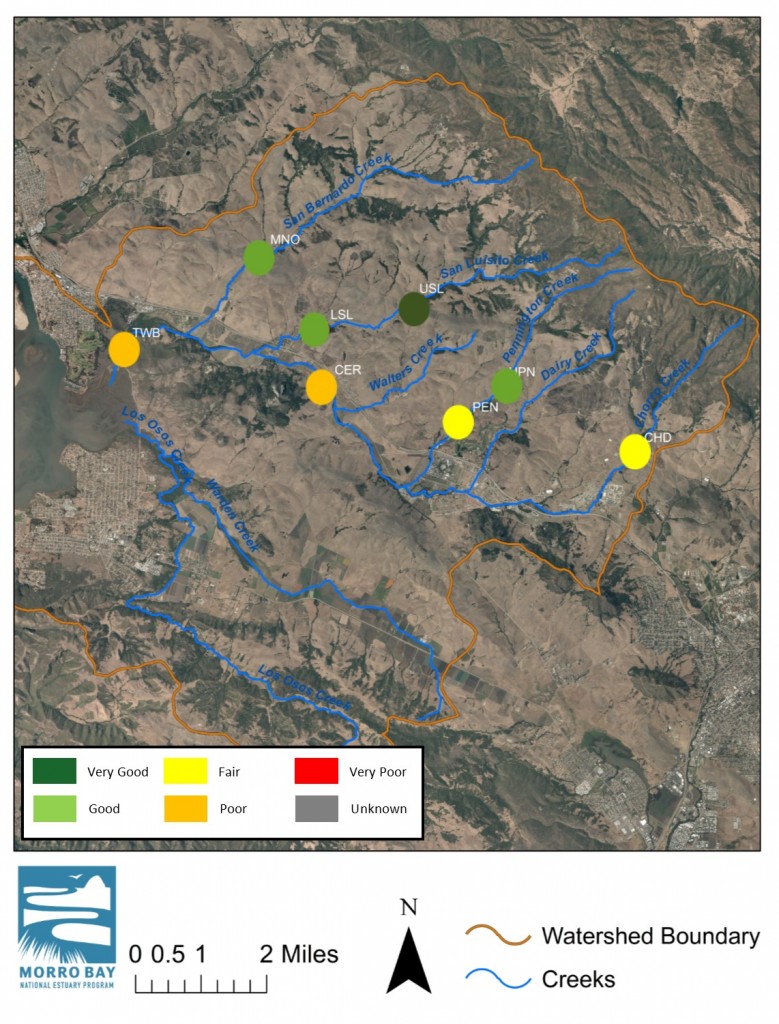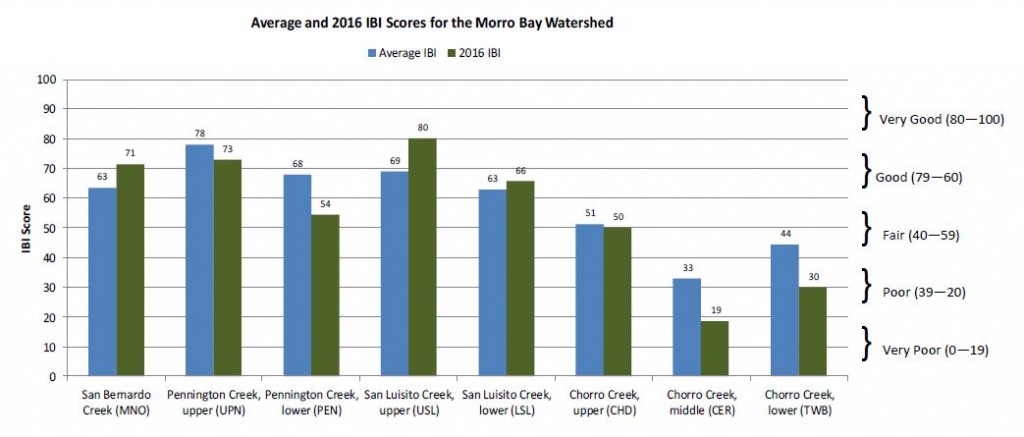Our Monitoring Program and its dedicated corps of volunteers use various scientific methods to track the health of our waters. One tool in our arsenal is bioassessment monitoring, a detailed effort where we gather habitat data and collect macroinvertebrates or “macros,” bugs visible to the naked eye.
Our 2016 Bioassessment Effort
In April and May of this year, over 20 volunteers joined our staff in collecting habitat data and macro samples from eight sites on local creeks. Collectively, these volunteers put in over 100 hours of time to collect this data. At each site, they recorded over a thousand pieces of information.
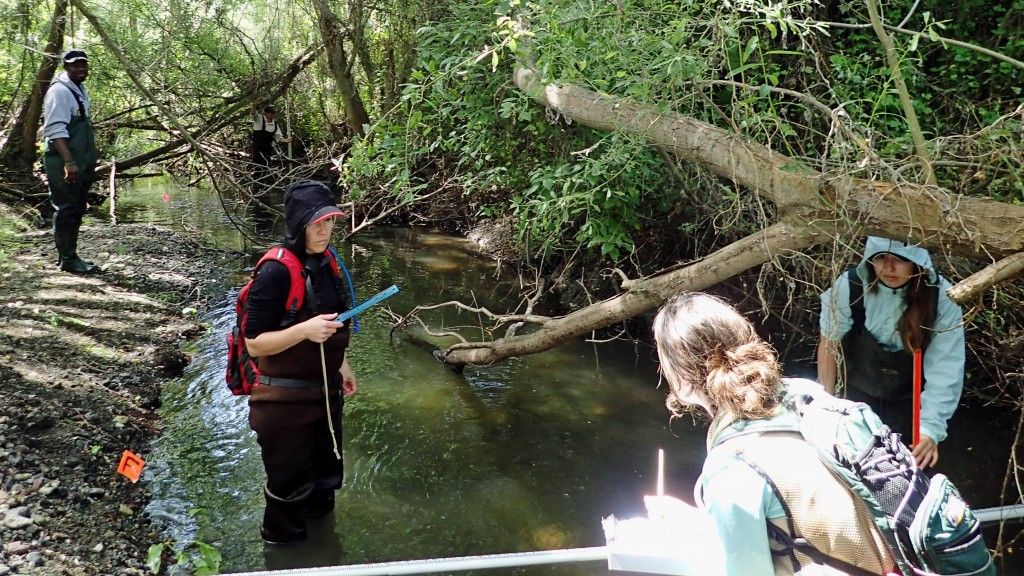
We sent the macros collected by the bioassessment volunteers to a specialized lab for sorting, identification, and counting. The lab uses the data we collect to calculate scores that indicate whether a creek can support a healthy array of macros. Since these macros serve as food for fish, a healthy macro population means good habitat for sensitive species such as steelhead.
For example, some macros are very tolerant of pollution, so if that’s all you find in a creek, you know that the water quality is likely poor. Others are sensitive to pollution, so if you find them in a creek, you know the water quality is likely good. Both sensitive macros and steelhead like cold, clear water with high oxygen levels and minimal nutrient pollution.
2016 Data is in!
The lab has completed its work and our spring 2016 data and analysis have arrived. The following map shows the eight locations monitored, as well as a score for each site. This score is called the Southern California Index of Biotic Integrity, a method developed by the state using macro data to calculate a single score for each site. Scores range from Very Good, which means the waters support the most sensitive species of macros and fish, to Very Poor, which means the waters would support only the most pollution-tolerant aquatic life.
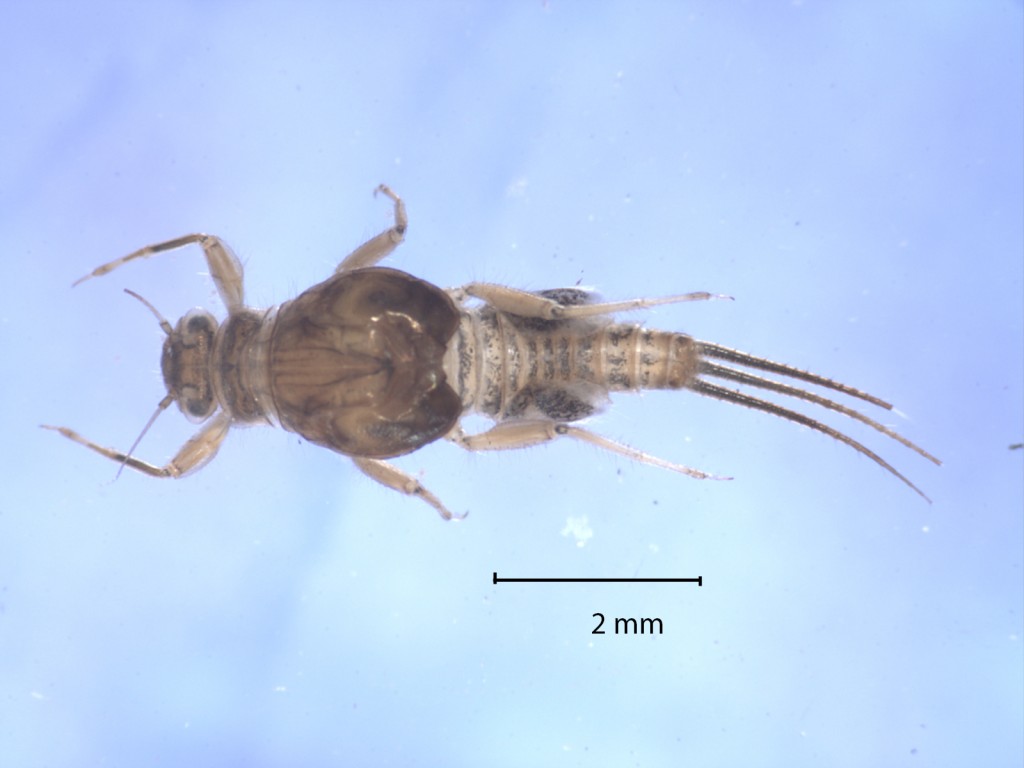
The map below shows the scores for our 2016 bioassessment sites.
In 2015, we saw an overall decline in scores over previous years. In 2016 we received only about half the rainfall of an average year, but it was more than we had received in each of the past few drought years. So, we were hoping to see an improvement in scores in 2016.
The following graph shows the 2016 scores in comparison to the average scores from previous years.
We saw improvement in the scores for 2016 on San Luisito, upper Pennington, and San Bernardo Creeks, as compared to the 2015 results. These tend to be sites with excellent water quality, healthy macro populations, and the best conditions for steelhead. Although not all of the scores were back up to the averages from previous years, we were pleased to see an improvement. The score at upper Chorro Creek remained stable, but the scores at middle and lower Chorro decreased this year. Upper Chorro Creek is thought to have stable macro scores because it’s immediately downstream of the reservoir at the top of Chorro Creek, which releases a steady stream of water. The middle and lower Chorro Creek sites suffer from poor habitat and water quality too low for sensitive macros.
A Special Thank You to the Harold J. Miossi Charitable Trust
The Harold J. Miossi Charitable Trust provided generous funding for our bioassessment monitoring efforts in 2013, 2014, and 2016. The lab analysis requires a great deal of time and expertise, which makes it a large expense.
Ann Kitajima, the Assistant Director for the Estuary Program, is very grateful for this continued support. As she says, “The Miossi Trust has had a huge impact on our bioassessment monitoring effort. Their contribution of $30,000 over three years made this valuable data collection effort possible. Our partnership with the Trust combines our shared interests of environmental protection and education. Our volunteers learn a real-world skill, and our partnership with the Morro Bay Natural History Museum brings an excellent macro docent program to budding scientists of all ages.”
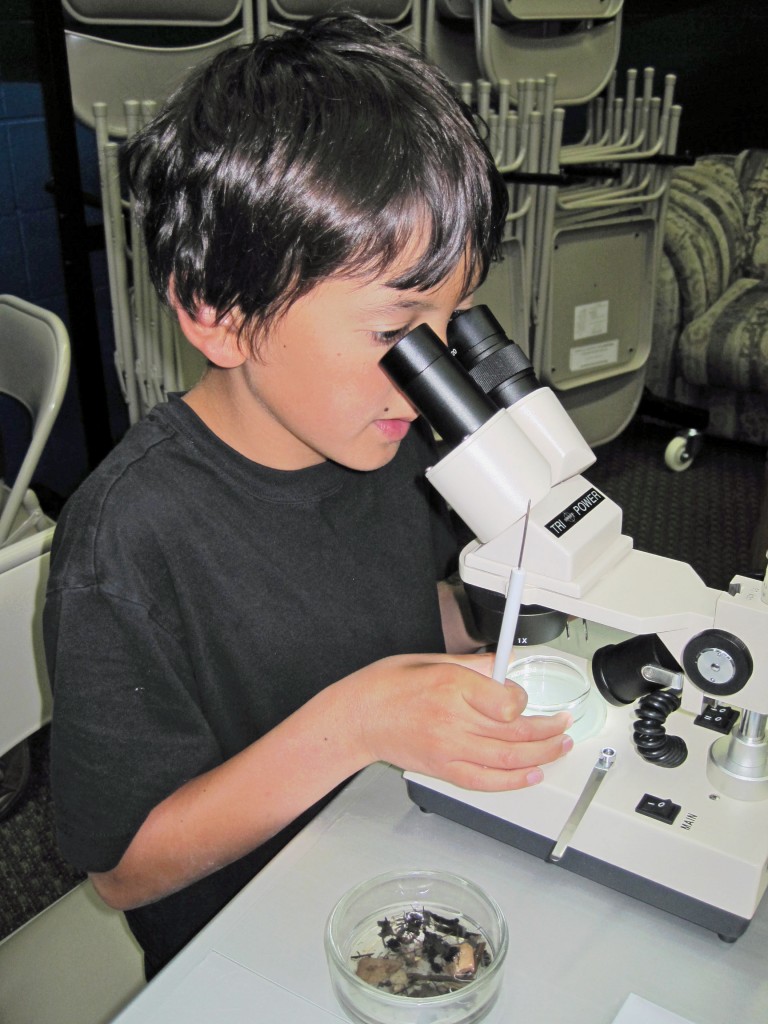
The Estuary Program is excited to announce a $10,000 grant from the Harold J. Miossi Charitable Trust to support our 2017 macro monitoring effort.
Hope you’ll join us in the spring for our 2017 monitoring!
